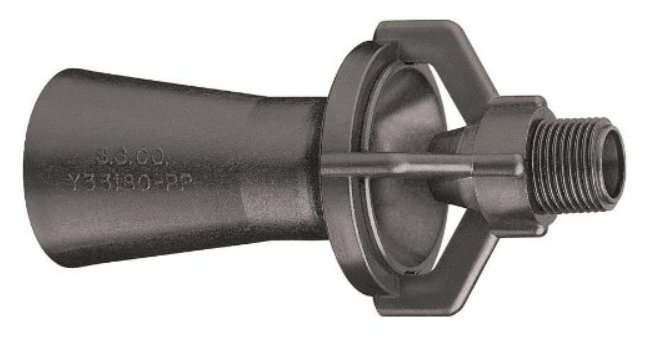Bos88
Mechanical
- Oct 20, 2017
- 23
Hi All,
I am working on a 700 TR process cooling application having 2 water-cooled screw chillers. The chillers are piped to several plate and frame heat exchangers and primary pumps are constant flow. As the primary loop volume is very small, we have added buffer tanks on the return piping (before the pumps) to prevent chillers from short cycling. Due to some local availability constraints, we have to use 4 buffer tanks (1000 gal. each) piped in series instead of a large one.
One of the supplier has offered a 4-port buffer which to me is more appropriate for a primary-secondary application which is not the case in my system. He mentioned we can close 2 of the ports and use it as if it was a 2-port system. When I looked at the design of this buffer tank, it does not have any internal baffle plate (as it is design primarily for P/S applications). My colleague handling the layout of the project was planning to pipe the buffer tanks in series with either
- Solution 1: tank 1 having top inlet and bottom outlet piped to tank 2 bottom inlet, then from tank 2 top outlet to tank 3 top inlet and from tank 3 bottom outlet to tank 4 bottom inlet
- Solution 2: Tank 1 bottom outlet piped to tank 2 top inlet, tank 2 bottom outlet to tank 3 top inlet and finally tank 3 bottom outlet to tank 4 top inlet
My questions:
1) Do you think that any of these configuration will work properly (adding volume to the network to prevent chillers short cycling). My main concern is that there are no baffles in these tanks and from what I read on different suppliers web site, baffles in buffer tanks are required to prevent stratification and ensure adequate mixing.
2) Which piping configuration is preferable: solution 1 or 2?
3) As it is a process cooling, do you think it is more appropriate to locate the tanks downstream of the chillers (supply side) rather than upstream (as we have currently considered).
Thanks in advance for your comments/suggestions.
I am working on a 700 TR process cooling application having 2 water-cooled screw chillers. The chillers are piped to several plate and frame heat exchangers and primary pumps are constant flow. As the primary loop volume is very small, we have added buffer tanks on the return piping (before the pumps) to prevent chillers from short cycling. Due to some local availability constraints, we have to use 4 buffer tanks (1000 gal. each) piped in series instead of a large one.
One of the supplier has offered a 4-port buffer which to me is more appropriate for a primary-secondary application which is not the case in my system. He mentioned we can close 2 of the ports and use it as if it was a 2-port system. When I looked at the design of this buffer tank, it does not have any internal baffle plate (as it is design primarily for P/S applications). My colleague handling the layout of the project was planning to pipe the buffer tanks in series with either
- Solution 1: tank 1 having top inlet and bottom outlet piped to tank 2 bottom inlet, then from tank 2 top outlet to tank 3 top inlet and from tank 3 bottom outlet to tank 4 bottom inlet
- Solution 2: Tank 1 bottom outlet piped to tank 2 top inlet, tank 2 bottom outlet to tank 3 top inlet and finally tank 3 bottom outlet to tank 4 top inlet
My questions:
1) Do you think that any of these configuration will work properly (adding volume to the network to prevent chillers short cycling). My main concern is that there are no baffles in these tanks and from what I read on different suppliers web site, baffles in buffer tanks are required to prevent stratification and ensure adequate mixing.
2) Which piping configuration is preferable: solution 1 or 2?
3) As it is a process cooling, do you think it is more appropriate to locate the tanks downstream of the chillers (supply side) rather than upstream (as we have currently considered).
Thanks in advance for your comments/suggestions.


